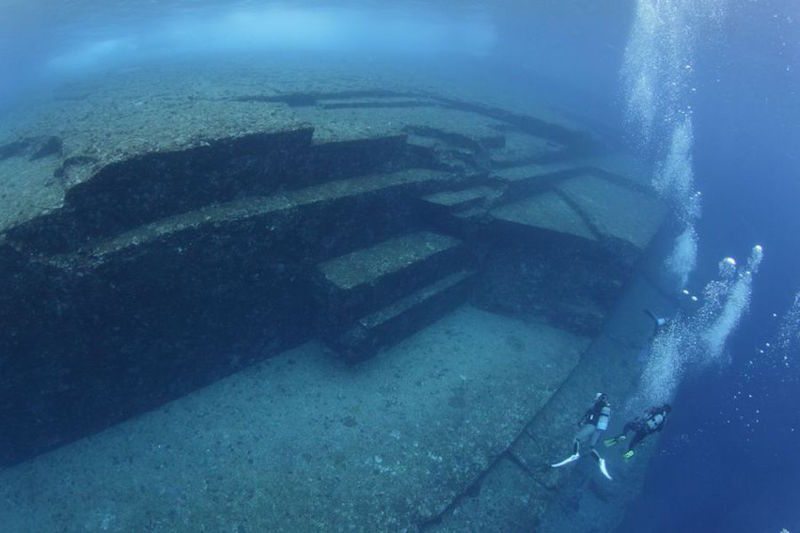The Yonaguni Monument
Episode #7 of the course “Mysterious World Landmarks”
A discovery in 1987 off the coast of Yonaguni, Japan drew international attention. Underwater in the Pacific Ocean lies a series of seemingly man-made rock structures. While some divers and researchers who have seen the rocks claim they were naturally formed, developing their shapes and markings over time because of the water’s movement, others argue that the rocks are man-made sculptures that were sunk by a natural disaster. Those who believe the “monument” was made by humans claim that certain rocks appear to resemble humans and land animals, such as cows, and that they even still show signs of paint, perhaps applied by ancient people.
The “monument,” as it is referred to, off the coast of Yonaguni is composed of sandstone and mudstone. The main feature of the area is a rectangular platform of over 5000 square feet, but there is also a star-shaped platform and rocks said to be shaped like columns and straight walls. People who believe that the area was naturally formed argue that the movement of ocean waters could be responsible for all these formations. Some divers report that the rocks are engraved or etched with symbols and rudimentary artwork, while other divers claim that the rocks have natural carvings associated with marine life.

Ancient Japanese legend tells of the civilization of Mu, which sunk beneath the waves of the Pacific and was never recovered. Like the lost city of Atlantis, this legend has inspired many people to search for archeological evidence. Research is ongoing to find out if the rocks could be remnants of a sunken ancient city or if they are a wondrous example of the work of ocean currents.
Learn Something New Every Day
Get smarter with 10-day courses delivered in easy-to-digest emails every morning. Join over 400,000 lifelong learners today!
Share with friends

